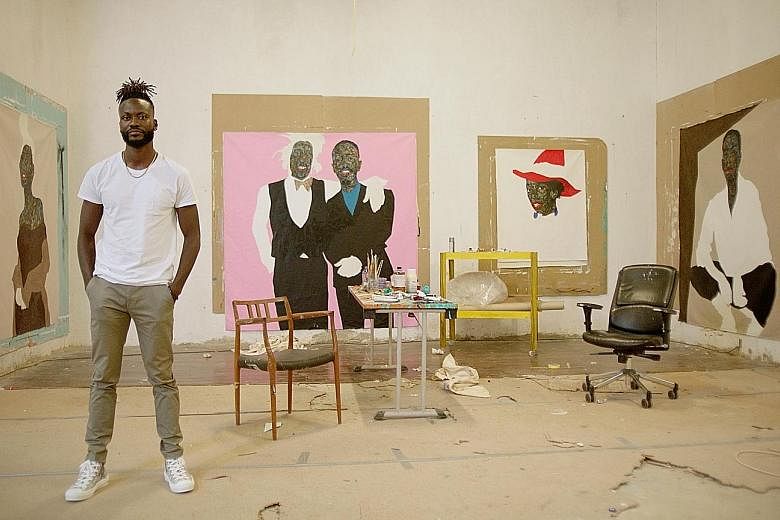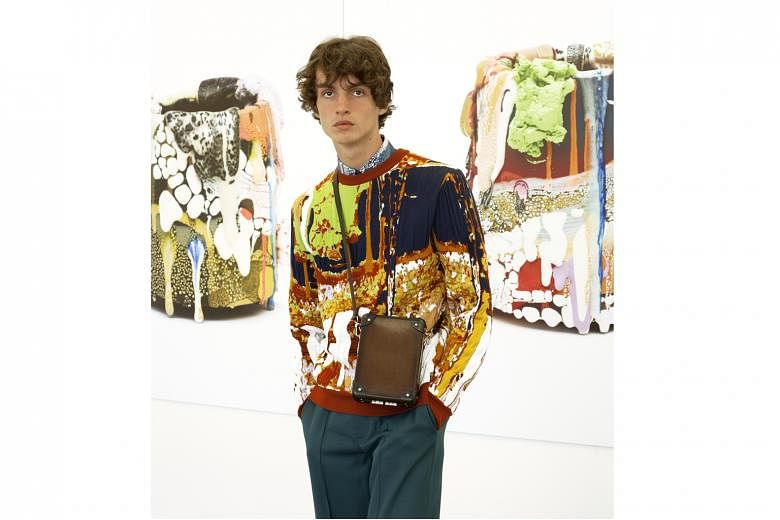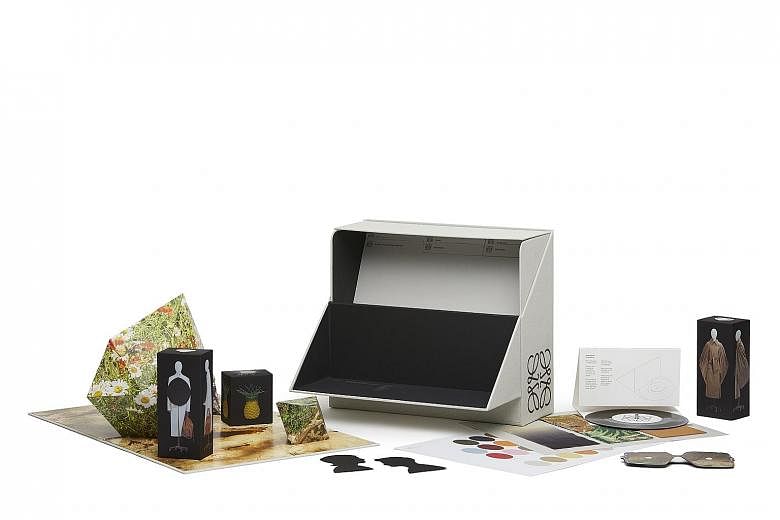A new normal is in place for the world, the fashion industry included.
This month, Paris broke from tradition in more ways than one when presenting its men's collections for the Spring/Summer 2021 season.
The city, usually the last of the big four (the others being London, Milan and New York) on the calendar, went first this time. And it went fully digital, treading and leading into the uncharted waters of presenting collections online.
The season had a distinct sense of promise - that new, inventive ways of seeing might be possible.
The house of Hermes was one of the earliest to present its collections, and it did so in a brilliantly artful and thoughtful way.
Veronique Nichanian, who has stewarded the men's universe at the house for 31 years as artistic director, works in sublimely subtle shifts.
This season, the collection centred on carefree expression through lightness and simplicity. Streamlined, unfussy silhouettes in blousy fabrics, leathers made supple and sensual - a kind of optimism to be worn.
What was surprising, though, was the decision to partner playwright and theatre director Cyril Teste on a short film and live performance titled Hors-Champ - French for "offscreen".
Basically, the backstage setting of a fashion show was simulated and filmed in real time. Models got dressed and handed bags and accessories as finishing touches.
Nichanian strolled, tweaking the styling as she went: sleeves cuffed, jackets buttoned or zipped a certain way, a shirt tucked just so.
The models gave themselves a once-over in the mirror, then walked.
It peeled back the high falutin' theatricality of a fashion show to reveal the work in progress - celebrating process rather than product.
Loewe made a similar twist on a familiar format. Instead of press notes at a physical fashion show, editors were sent a show-in-a-box.
Divided into sections inside were: a dossier of information; expensively printed lookbooks; shoes photographed as postcards; sunglasses printed on perforated paper so they could be worn and tried; colour, fabric and texture swatches; a paper pattern of one of the collection's key pieces; and a pop-up of an imagined show set, as well as a cardboard record player that played the collection's soundtrack.
Everything but the kitchen sink, in effect. But it made for a stimulatingly tactile and physical experience in lieu of the usual runway show.
The project, conceived by the house's creative director Jonathan Anderson with design studio M/M Paris, referenced inventive experiments like Marcel Duchamp's Museum in a Box.
It helped, of course, that Loewe made moves in 2018 into printing and publishing, securing for itself the resources and know-how to produce printed work as an extension of the key fashion business.
At Berluti, the Belgian creative director Kris Van Assche was faced with a problem.
Just three collections into his tenure with the brand and its rejuvenation project, he was stymied by a pandemic that forced the design team to work from home.
In the face of this distance, Van Assche turned to the idea of connectivity as an art form in the face of separation.
The house unveiled its first ready-to-wear collaboration with the experimental Los Angeles ceramic artist Brian Rochefort, whose vibrant, oozy, unctuous sculptures are a daring buck in the face of ceramic tradition.
Berluti is a house founded in 1895 and famous for expensive, patinated leather shoes - under Van Assche, it is finding a modern voice. Old and new, texture and colours, these were the threads that the two mined for dialogue and exchange - fleshed out more fully in a film in which Rochefort and Van Assche discuss their process.
Collaboration has been a strong point of Kim Jones, the artistic director of Dior Men's.
Since joining the brand in 2018, he has worked with names like Daniel Arsham, Shawn Stussy, Hajime Sorayama, and brought on board emerging talents like Yoon Ahn of Ambush and Matthew Williams of Alyx (recently appointed to Givenchy) to design jewellery and accessories.
Jones' collection this season was underpinned by the Ghanaian-born, Vienna-trained artist Amoako Boafo who is most famous for his "Black Diaspora" series of paintings, which explores the nuances of Black identity, perception and masculinity.
There is immediate trepidation these days when a luxury fashion brand looks to Africa or Black culture for inspiration - appropriation has been a stubborn weakness.
But Jones in his own childhood moved from Ecuador to the Caribbean, Kenya, Ethiopia, Tanzania, and Botswana, before returning to London to study at Saint Martins college.
There is something to be said about an upbringing steeped in broad cultural understanding and appreciation, and it showed in this collaboration.
Boafo's works were the creative foundation, and Dior drew from it his vivid colours, graphic patterns, and three-dimensionality of the paintings.
These ideas were realised as near recreations of some of the paintings, either in the styling or on fabric through detailed embroidery, knit and intarsia.
And as with the other big brands, Dior premiered films to mark the collection. The first was a quasi-documentary, edited and soundtracked by the video artist Chris Cunningham, with interplaying footage from London and Boafo's studio in Ghana.
This introduced and explored Boafo's work, offering insight on the nature of the collaboration.
The second, directed by Jackie Nickerson, was an equally artful film that presented the actual collection - the fruits of the collaboration.
The significance of this collaboration, though, is in its sincerity. As an endeavour both cross-cultural and inevitably linked to commerce, it nevertheless shone because of the respect that Dior showed its collaborator.
It did not stink of tokenism - the French house has committed to supporting the work of young artists by sponsoring Boafo's art residency in Ghana - but of a level of excellence and integrity that, though rare, can evidently be upheld.
Which is a new normal to look forward to.



